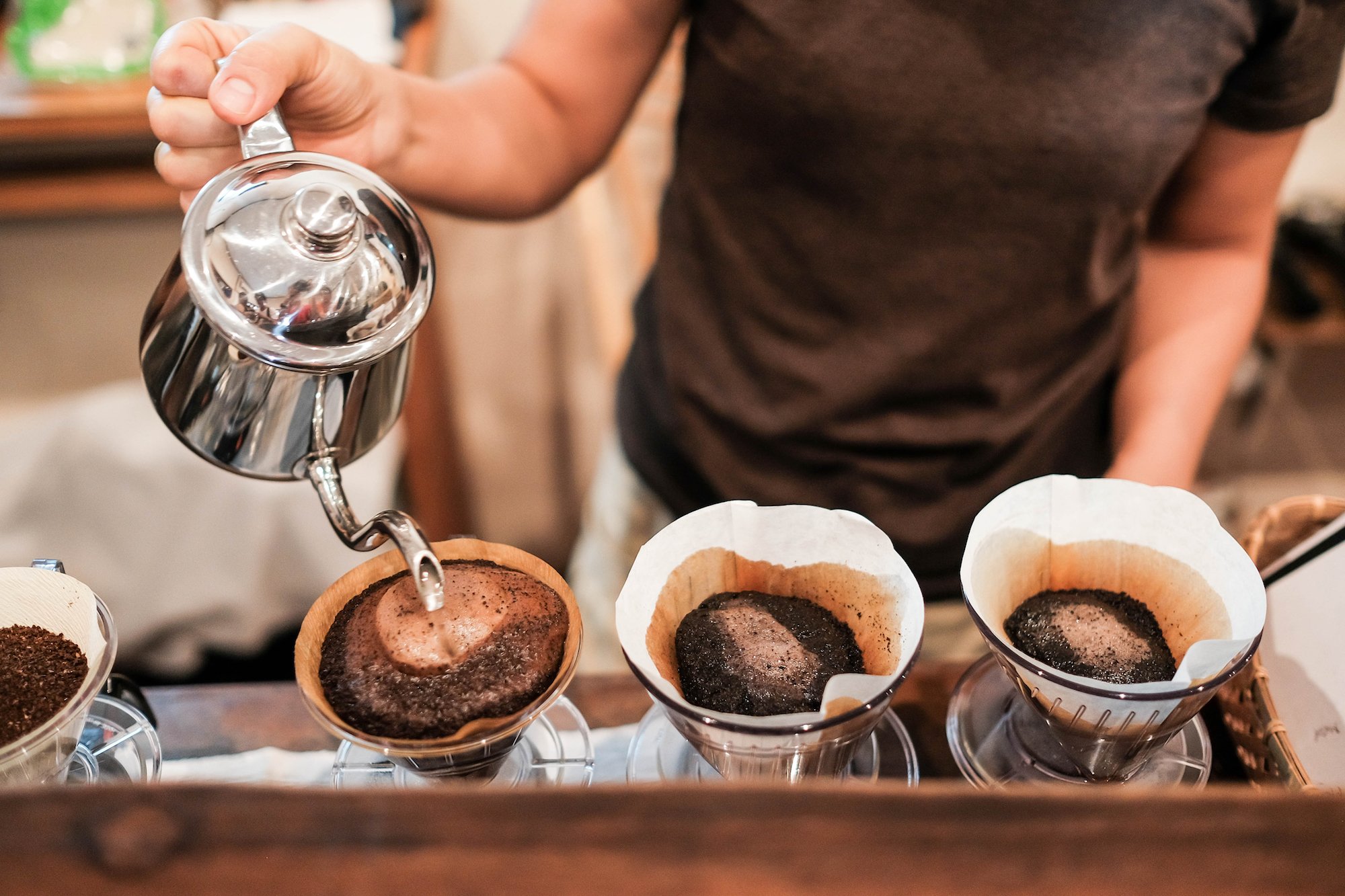Shopping Bag
0
- No products in the cart.

A key moment in the journey from crop to cup is the process of brewing. All the hard work up until this point, all the potential and deliciousness locked within the coffee can be lost by bad brewing. It is upsetting how easy it is to brew coffee badly, but understanding the basic principles can lead to better results and make the process more enjoyable. A coffee bean is composed mostly of cellulose – it is very similar to wood.
Cellulose cannot be dissolved in water, so this is what makes up most of the spent grounds we throw away after brewing a cup of coffee. Broadly speaking, everything else that makes up the coffee bean can be dissolved in water and can end up in the cup, but not everything that we can get from the coffee tastes good. From the 1960s, there has been ongoing research into measuring how much of the coffee we actually want to extract for the resulting cup to taste good. If you don’t take enough from the grounds then the cup of coffee will not only be weak, but it will often also be sour and astringent.
This is called ‘underextraction’. And if we take too much from the grounds then the cup of coffee will taste bitter, harsh and ashy.
This is what we call ‘overextraction’. It is possible to calculate whether we have extracted as much as we want from the coffee. In the past this was done relatively simply: the grounds were weighed before brewing, then after brewing the spent grounds were placed in a low oven until they were completely dry. When they were weighed again, the difference in weight would indicate how much of the coffee had been extracted during the brewing process.
Now a combination of a specialized refractometer and smartphone software allows us quickly to calculate how much has been extracted from the grounds. Generally it is agreed that a good cup of coffee contains 18–22 per cent by weight of the ground coffee used to brew it.
Free Shipping On All Orders $200+ |
